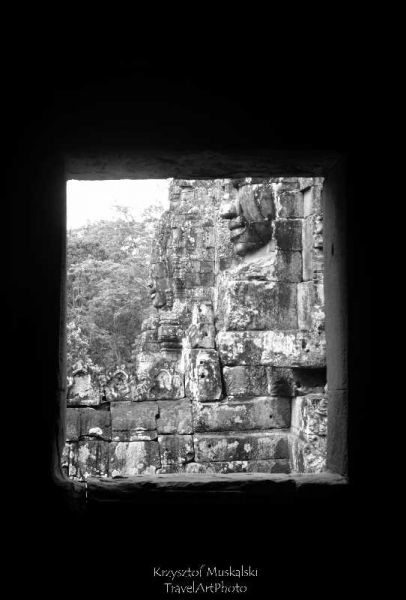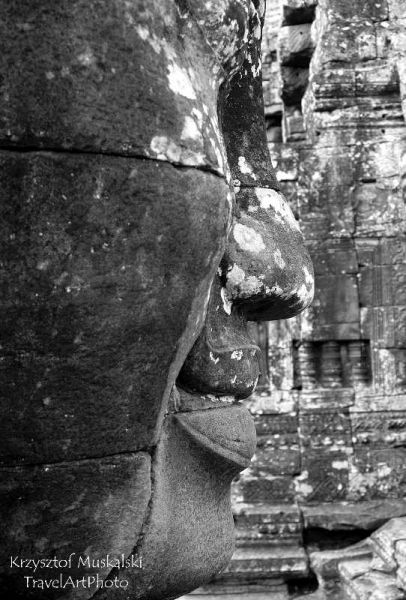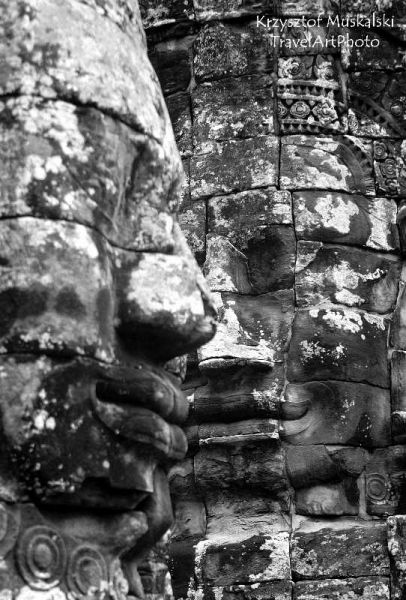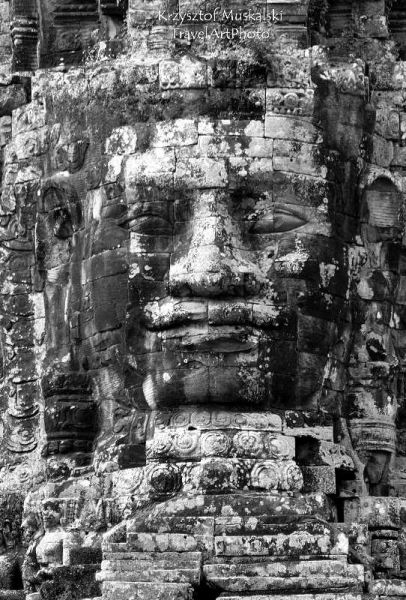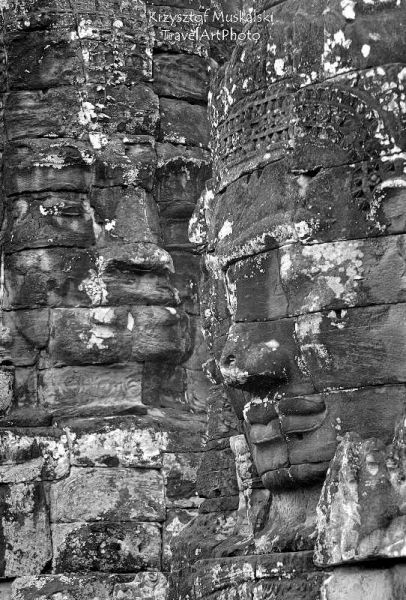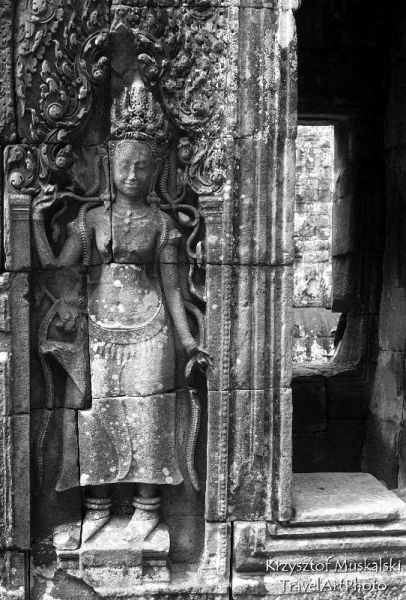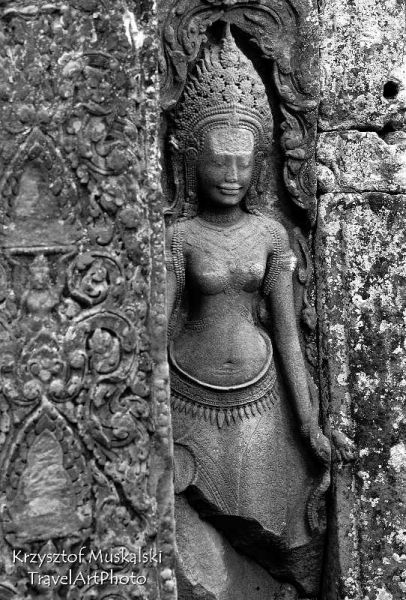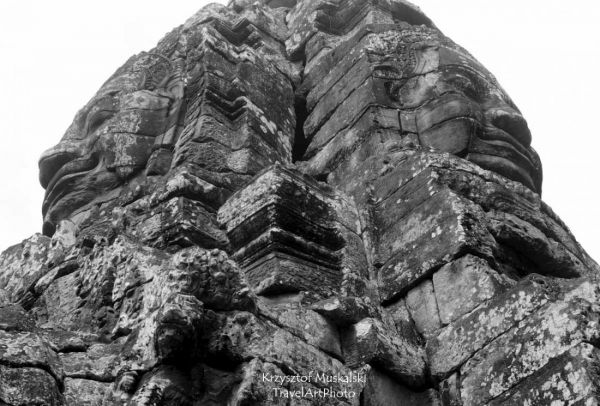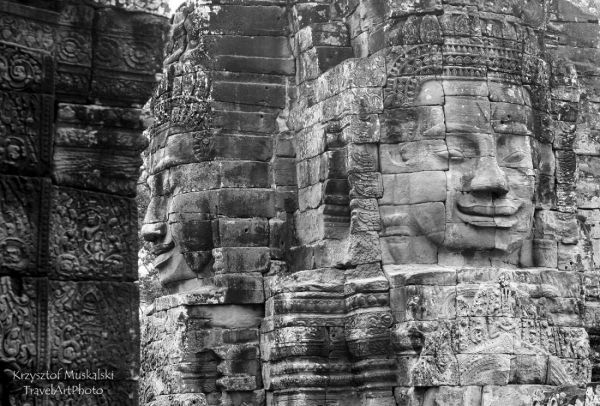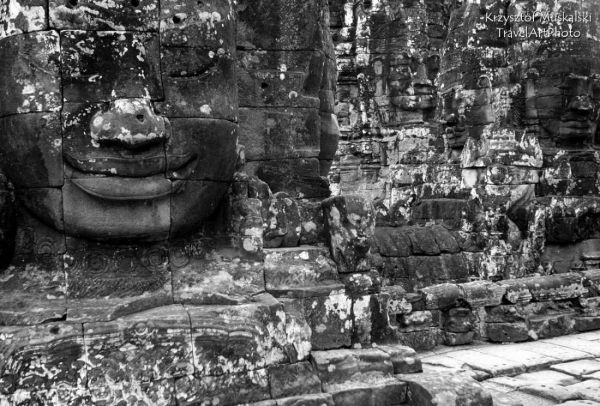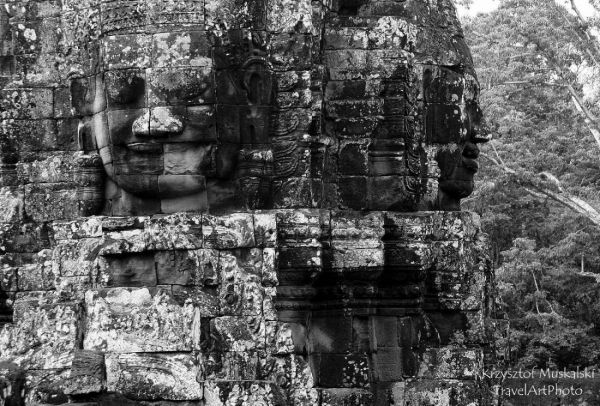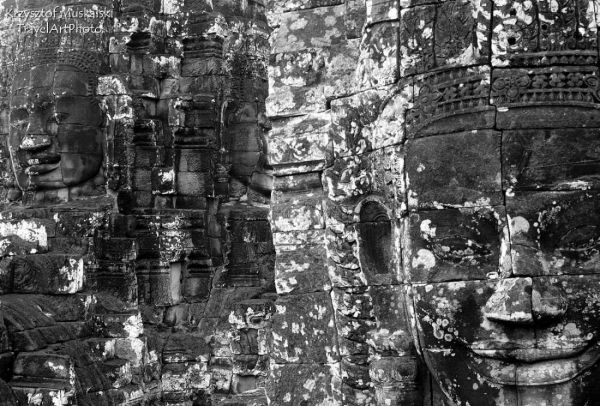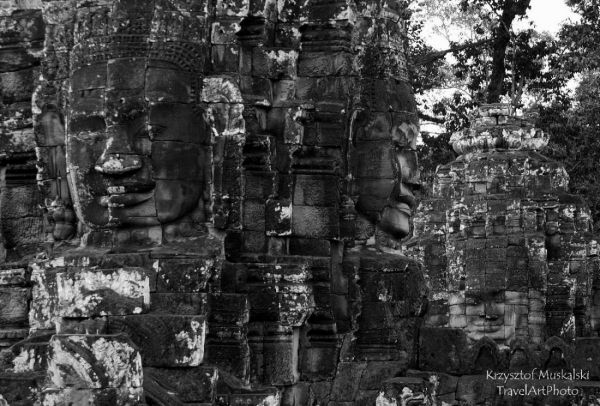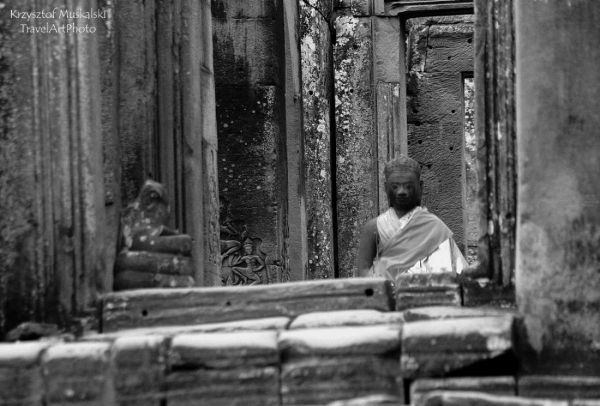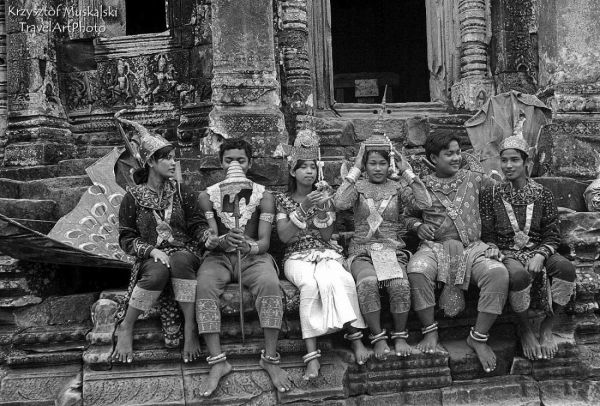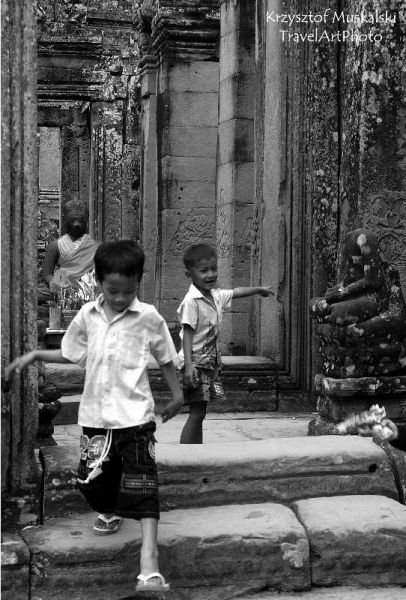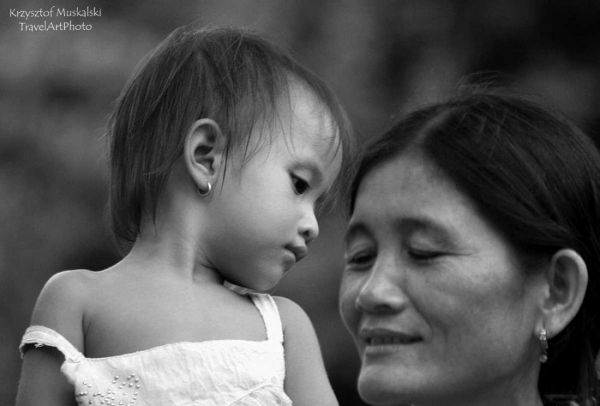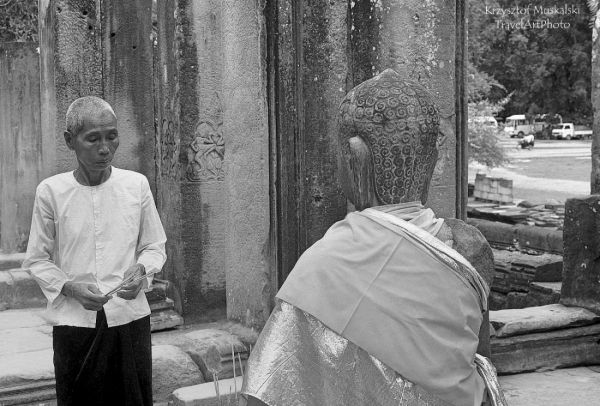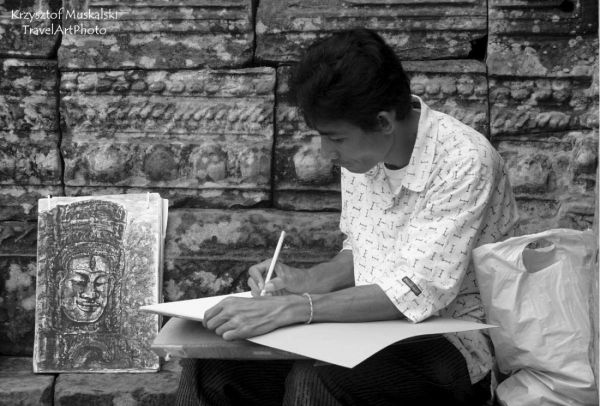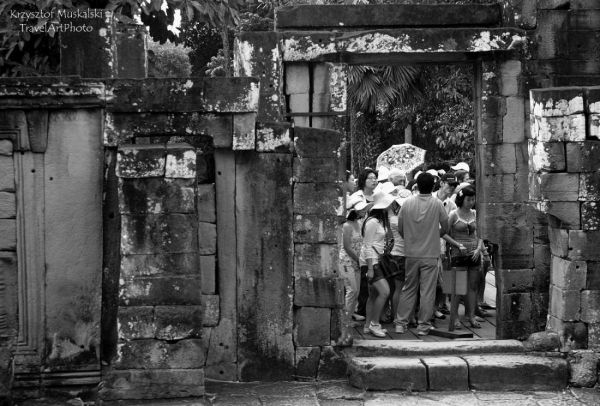January - March 2011
There are many jewels of Khmer architecture in the jungle surrounding the Cambodian Angkor temple. Undoubtedly, Bayon is one of them. Unlike the elegant and refined Angkor Wat, Bayon is described as a "barbarian baroque product." In fact, entering the walls of Bayon you can feel overwhelmed and even stunned. Here is how one of Angkor's first discoverers, Pierre Loti, described his impressions 100 years ago: "I looked up at the towers rising above me, overgrown with greenery, and suddenly I shivered with fear as I saw a giant frozen smile looming down at me, and then another smile, over there on another tower, and then 3, and then 5 and then 10.''
And it was this mysterious smile that became the symbol of Bayon. The French call it the "Angkor's smile". This smile appears on all 216 faces adorning 54 huge towers, the highest of which reaches 43 meters of height. Visiting the temple, it is impossible to free yourself from the mysterious glances and smiles of stone faces, faces that, are according to some, are the image of Bodhisattawa Avalokitesvara, according to others his earthly incarnation. Impressed by this unusual complex, it's hard to imagine its original appearance – with all towers gold-plated. Poles also contributed to the rescue of this temple by taking part in conservation works in the 1980s. Life, not only the spiritual, is reborn in Bayon as well as in the entire Angkor complex, after it was brutally brought down 40 years ago by the violent Khmer Rouge regime. Fortunately, the smile of Bayon's stone faces is seen more and more often on the faces of modern Cambodian people.
Krzysztof Muskalski

